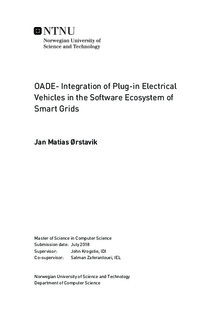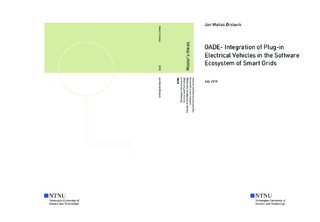| dc.description.abstract | The market share of electric vehicles is currently skyrocketing. This causes an increased demand for electric power. It is therefore crucial to consider how to efficiently charge electric vehicles without overloading the power grid. With technology continuously improving and affecting more and more aspects of our life, the concept of smart power grids has started to appear. A smart grids ability to exchange information between entities will allow better decisions to be made for power balancing. As the added load of charging a large fleet of electric vehicles is substantial, it is important to define a process that ensures charging in an optimal fashion for both consumer and grid.
Therefore, this thesis has a dual focus: The first is to introduce a new approach to electric vehicle charging optimization and the second is to develop a core system for computing optimal charging patterns of electric vehicles connected to a smart grid. This system is intended as a base for future research as well as a base for easy integration in future smart grids. It consists of multiple different models for optimizing charging patterns. These models are the central, the decentral and a new hybrid model. A hybrid model is in this thesis defined as a model in between a central and a decentral approach. Aspects of mathematical optimization that were of interest to allow the definition of the hybrid model were The Lagrangian relaxation and The Benders dual decomposition. In all the models, the electric vehicles are modeled through an agent-based model. This approach allows for each vehicle to make decisions on their own, based on local information. The central and the decentral model achieve positive, expected results, but unfortunately the hybrid model has an unresolved implementation issue which limits the usefulness of its results. Despite this, the theoretical foundation for hybrid models is solid, and a working implementation of one should still be pursued.
Even though the implementation of the new model was not a complete success, the developed system resulted in a valuable core that can be utilized by any interested party; There are few technical prerequisites, and the system is implemented to be adaptable to any situation. | |

